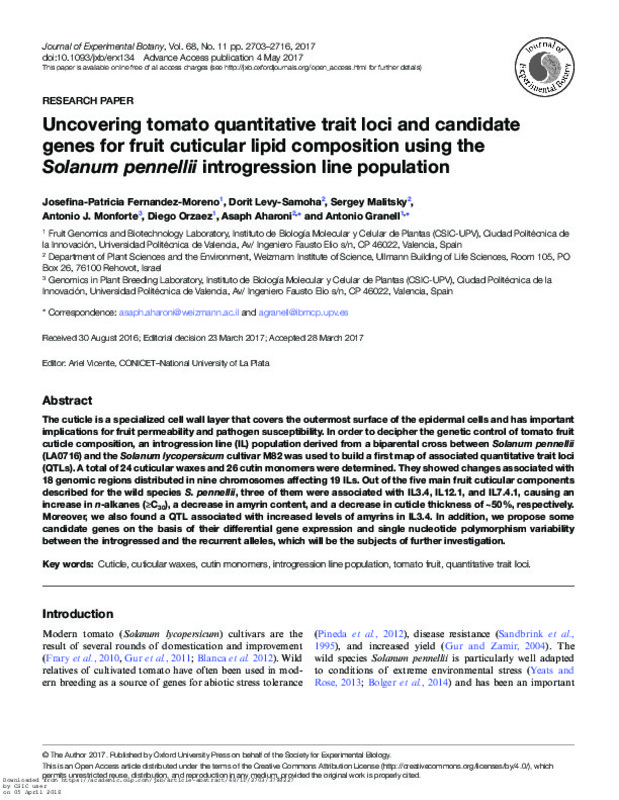JavaScript is disabled for your browser. Some features of this site may not work without it.
Buscar en RiuNet
Listar
Mi cuenta
Estadísticas
Ayuda RiuNet
Admin. UPV
Uncovering tomato quantitative trait loci and candidate genes for fruit cuticular lipid composition using the Solanum pennellii introgression line population
Mostrar el registro completo del ítem
Fernández Moreno, JP.; Levy-Samoha, D.; Malitsky, S.; Monforte Gilabert, AJ.; Orzáez Calatayud, DV.; Aharoni, A.; Granell Richart, A. (2017). Uncovering tomato quantitative trait loci and candidate genes for fruit cuticular lipid composition using the Solanum pennellii introgression line population. Journal of Experimental Botany. 68(11):2703-2716. https://doi.org/10.1093/jxb/erx134
Por favor, use este identificador para citar o enlazar este ítem: http://hdl.handle.net/10251/108090
Ficheros en el ítem
Metadatos del ítem
| Título: | Uncovering tomato quantitative trait loci and candidate genes for fruit cuticular lipid composition using the Solanum pennellii introgression line population | |
| Autor: | Fernández Moreno, Josefina Patricia Levy-Samoha, Dorit Malitsky, S. Aharoni, A. | |
| Entidad UPV: |
|
|
| Fecha difusión: |
|
|
| Resumen: |
[EN] The cuticle is a specialized cell wall layer that covers the outermost surface of the epidermal cells and has important implications for fruit permeability and pathogen susceptibility. In order to decipher the genetic ...[+]
|
|
| Palabras clave: |
|
|
| Derechos de uso: | Reconocimiento (by) | |
| Fuente: |
|
|
| DOI: |
|
|
| Editorial: |
|
|
| Versión del editor: | http://doi.org/10.1093/jxb/erx134 | |
| Código del Proyecto: |
|
|
| Agradecimientos: |
Research at the IBMCP was supported by the Spanish Ministry of Education and Culture (BIO2013-42193-R) and H2020 TRADITOM (634561). AA, AG, and J-PF-M thank COST FA1106 Quality Fruit for STSM and networking activities. ...[+]
|
|
| Tipo: |
|









